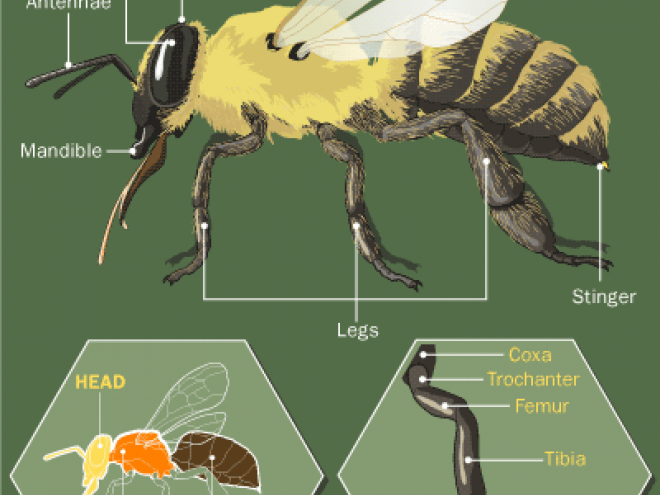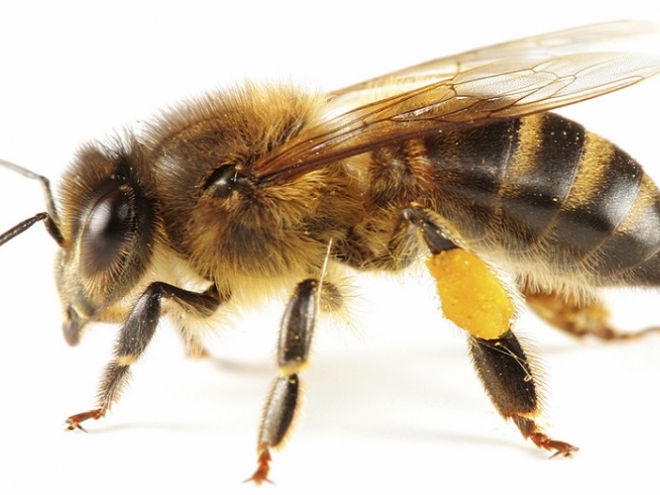Bees vary greatly in size. Some tropical social bees are only one-twelfth of an inch (2 mm) long. Others, such as the leaf-cutter bee, a solitary bee, sometimes reach a length of 1 1/2 inches (38 mm). A bee’s body has a lot in common with the bodies of other insects. Much of it is covered in an exoskeleton made from small, movable plates of chitin. A bee’s body is also covered in lots of fuzzy, branched hair, which collects pollen and helps regulate body temperature. The body also has three sections — the head, the thorax and the abdomen.
The head houses the brain, a collection of about 950,000neurons. These neurons are specialized, and they communicate with specific neighboring neurons. This division of tasks is part of why a bee’s brain, which is a fraction of the size of the bee’s head, can perform complex tasks that might ordinarily require a bigger brain. A system of nerves allows the brain to communicate with the rest of the body.

From Head to Tarsus
On its head, a bee has two sensory antennae. The antennae od honeybee are bent. Other bees have straight antennae. This ‘elbow’ allows for the honeybee to have a greater radius for feeling its surroundings. The antennae of the honeybee are extremely sensitive. They gather a lot of information including present chemicals, texutre, odor and even taste. It also has five eyes — three simple eyes, orocelli, and two compound eyes. The compound eyes are made of lots of small, repeating eye parts called ommatidia. In each compound eye, about 150 ommatidia specialize in seeing patterns. This allows bees to detect polarized light — something human beings cannot do. Polarized light comes from the sun. This enables honeybees to see their way home on dark and cloudy days. These large eyes are sensituve to light, motion and colors yet for all the lenses in tehse compound eyes, a honexbee may still mistake a lady in a bright floral dress as an actual flowering plant and land on her to invastigate.
Like most insects, a bee has complex mouth parts that it uses to eat and drink. The sizes and shapes of these parts can vary from species to species, but in general, most have: Paired mandibles, or jaws, a glossa, or tongue, a labrum and two maxillae. The labrum and maxillae are like lips. They support a proboscis, or tube for collecting nectar.
A bee’s two pairs of wings and three pairs of legs connect to its thorax. The wings are extremely thin pieces of the bee’s skeleton. In many species, the front wings are larger than the back wings. A row of hooks called hamuli connect the front and rear wings so they beat together when the bee is flying. The thorax is the anchor for the legs – bees have 6 legs. The front legs are slightly shorter in length than the back pairs.
The abdomen contains the honey stomach. The honey stomach enables the bee to carry about 75 mg of nectar from a flower back to the nest or hive. The sting is a modified ovipositor (egg laying organ). Only females are able to sting, and do so only when they feel threat of attack. The sting is barbed and is intended for stinging predators such as other insects, however, it is not adapted for stinging humans!
Source: animals.howstuffworks.com, www.buzzaboutbees.net, www.insectidentification.org
Image: http://www.rollmagazine.com/an-inspired-meditation-on-gardening-with-honeybees-in-mind/


